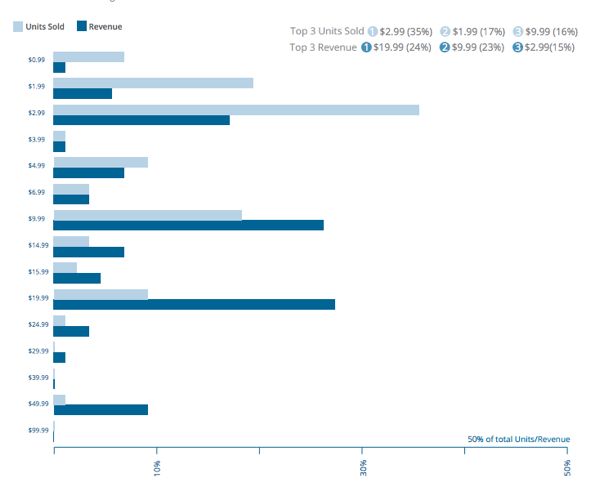"Standard currency should be given out periodically as a reward to stimulate the game's economy after users complete challenging tasks. Premium currency, on the other hand, should only be handed out in special situations to create an emotional attachment for the user. The difference between premium and standard currency must be very clear for this effect to work," says Ythan Pratt, marketing communications staff at W3i, in a feature post on monetizing freemium games.
After introducing virtual currency to the game economy, developers must be able to reinforce the purchasing behavior among users with consistent reminders. "If a player attempts to make a purchase but lacks the currency needed, always ask them if they would like to purchase more virtual currency. This has proven to greatly increase monetization," says Pratt.
How to price virtual currency
Developers face the challenge though of correctly pricing their virtual currency. W3i recommends limiting currency bundles to five options. "Providing too many choices will overwhelm the user and increase the likelihood that they will buy the cheapest package," says Pratt.
Pratt provided an example with the mobile game Temple Run, which only provides only four bundle options:
$0.99 for 2,500 currency
$4.99 for 25,000 currency (effectively $1 for 5,000)
$9.99 for 75,000 currency ($1 for 7,500)
$19.99 for 200,000 currency ($1 for 10,000)
Notice how there is a noticeable bulk discount for larger bundles, which make them attractive for players who would have otherwise only considered buying the lowest bundle. Offering even higher-priced $100 bundles can be lucrative for developers provided there is demand for it, but the strategy can also backfire, warns Pratt.
"If you have a large virtual store huge price points like $99.99 can greatly increase revenues, but remember if they return the purchase Apple won't give back the $30 that they took. It's best to A/B test these prices and make sure you're getting the most revenue out of the pricing structure."
$9.99 - $19.99
Even if it opts to skip the $100 mega-priced bundles, it's imperative for developers to offer at least a $9.99 option since these will form the bulk of revenue for the game. Pratt cited a W3i study which found that $9.99 - $19.99 transactions made up 47% of revenue from in-app purchases, making these price points the best moneymaker on free-to-play games.

Making it easy to spend
Developers should make spending virtual currency a breeze for users in order to encourage usage, and repeat purchases once their virtual currency stock runs out. "Once users obtain virtual currency, navigation between their current location and the store should be clear so they can easily make purchases. Best practices suggest limiting navigation to one click," says Pratt.